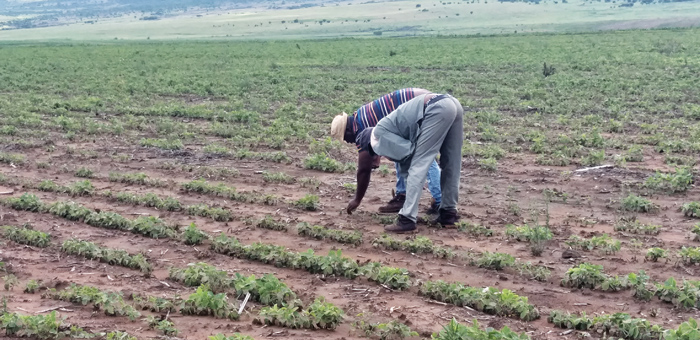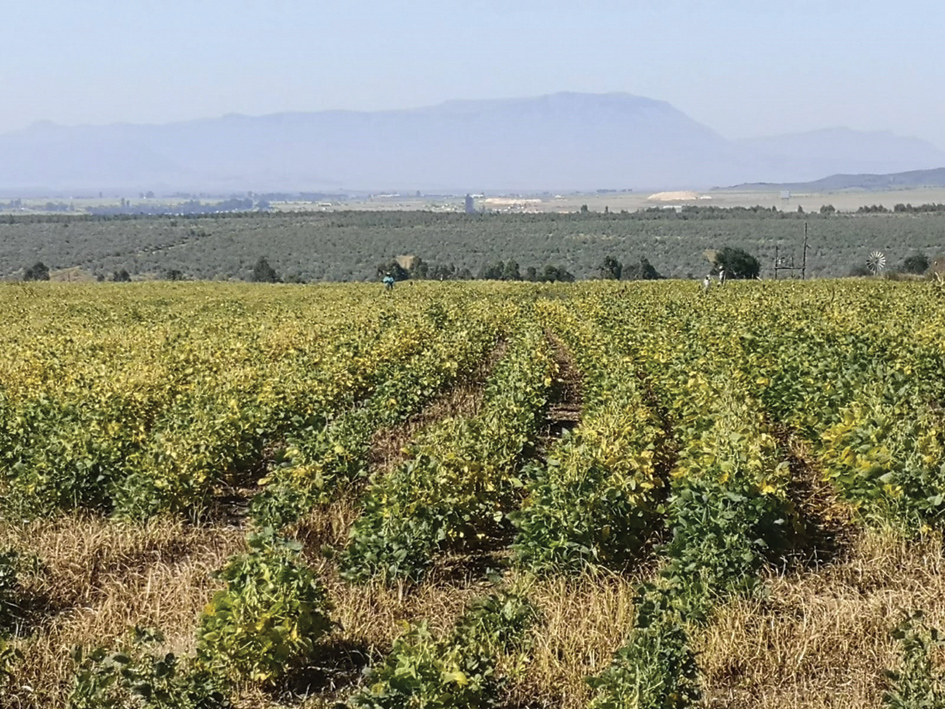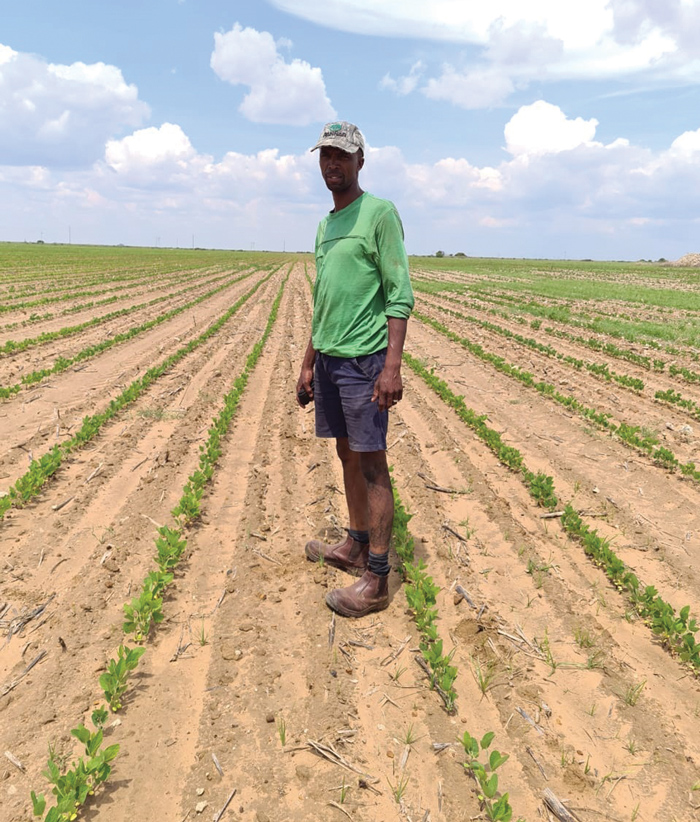April 2022
| RICHARD MCPHERSON, AGRIBUSINESS AND PROJECT MANAGEMENT CONSULTANT |
 |
Part of the planning for the efficient harvesting of your soybean crop starts with the correct choice of cultivars for your specific farm before planting.
The successful choice of the characteristics will largely decide the success of the harvesting process and the maximum yield attained. Hot and dry, or wet and overcast periods in the season can alter the expected date to harvesting to quite a large degree.
MAKE A DECISION
Some of characteristics to be taken into account include:

The Mthethwa brothers of Milnedale Farm in the Dannhauser area in KwaZulu-Natal counting their soybean seedlings.
Remember that cultivars that have a determinate growth habit cease vegetative growth soon after flowering begins. Pod and seed development is more uniform than an indeterminate type. This implies a shorter window for the crop to be ready for harvesting or combining. The indeterminate types continue vegetative growth even after flowering begins which implies a longer maturity period to harvesting.
The detailed growth phases and their descriptions can be downloaded from the internet from numerous sites and production manuals. It is highly advised that producers know these phases and can identify them in the soybeans as they grow.
All these factors should be taken into account. Spreading the growing season maturity dates over a longer period so that you can harvest different lands in time over a longer period will alleviate the pressure of harvesting the whole crop within a short period. Any rain received when the crop is due to be harvested can lead to 20% to 50% losses as the pods shatter after drying off again.

Sizwe Ngewenya’s soybean crop is growing well. He farms on Donkerhoek farm and is mentored by Jurie Mentz.
HARVESTING CONSIDERATIONS
Make sure that your combine harvester is in good condition or that you have a reliable contractor that will be on standby to move into the lands as soon as the soybeans are at the right stage.
At the reproductive or R7 growth stage the mature pods go from green to yellow to light brown, then dark brown with very dark spots depending on the cultivar type. The seeds are still at about 60% moisture content. If you can buy a proper seed moisture tester then you will know exactly. Alternatively take a sample to your nearest commercial silo operator and ask them to test it.
Farmers must visit their soybean lands every day to monitor the moisture content, as the rate of ripening can occur very quickly. Timely combining is critical to successful soybean production.
At the R8 stage 95% of the pods will be mature and the seeds can drop to 15% moisture within five to ten days. The optimum harvest moisture is 13% to 15% for maximum mass and minimum field losses. Soybeans should be harvested when the seed pods and the foliage are dry. Take a few pods and rub them in your hands to see how close they are to popping open if you are not sure.
Remember the following:
There is a delicate balance between too high and too low optimum harvesting moisture. Below 13% moisture, open seed pods will shatter and losses can be 10% or higher. At 10% there will be large shattering losses and the seeds themselves will split causing a loss of sample quality. Try and avoid this situation at all costs.
The combine drum speed and wind strength must be set for maximum cleaning but minimum losses from shattering. Always do a shattering percentage test before a combine has cut a swathe and then thereafter. You can then see if the combine is optimally set as the seed loss can be measured from the effect of the knife and table actions as well as the effectiveness of the internal threshing and loss of seed over the sieves. Try and reduce any seed splitting as much as you can. Adjust the combine settings as required.

Organ Serema has tried his hand at planting soya for the first time with the help of SACTA. His fields are looking very good.
DRYING AND STORAGE
The small farmer can clean and sort the crop on a small covered open sided shed. Then bag it and immediately sell it or keep for a short period. When the storage moisture is too high, rapid spoilage can appear in bulk seed that is too deep even if spread out on a concrete floor. Some producers will want to keep seed for next season’s planting and the germination percentage can be very quickly reduced.
For storing less than a year a 12% to 13% moisture content is advisable as this also is optimum for delivery in bags or bulk for selling.
The larger producer can decide to process the crop in a proper facility, shed or silo complex. It is vital that all foreign material and seed part splits be thoroughly extracted before drying. Soybean seed coats are very fragile and can be easily damaged by warm air hotter than 60°C. Reduce the use of augurs to seed coat damage although the seeds in on farm silos, stored for later sale, must be periodically recycled and pest control must be carefully applied. The state of the stored seed must be checked weekly to prevent any quality problems that might arise.
If you do not have the facilities it is best to deliver you crop to your nearest commercial silo for proper cleaning, drying and classing. The farmer can then decide to sell at the current market price or later if hedging in the futures market. Storing on farm can lead to massive financial losses to quality deterioration!
CONCLUSION
Knowing the growth phases of your crop in detail and monitoring the optimum maturity state for combining will lead to timely harvesting, handling, storage and selling the highest yield attainable for the best price possible.
Publication: April 2022
Section: Pula/Imvula